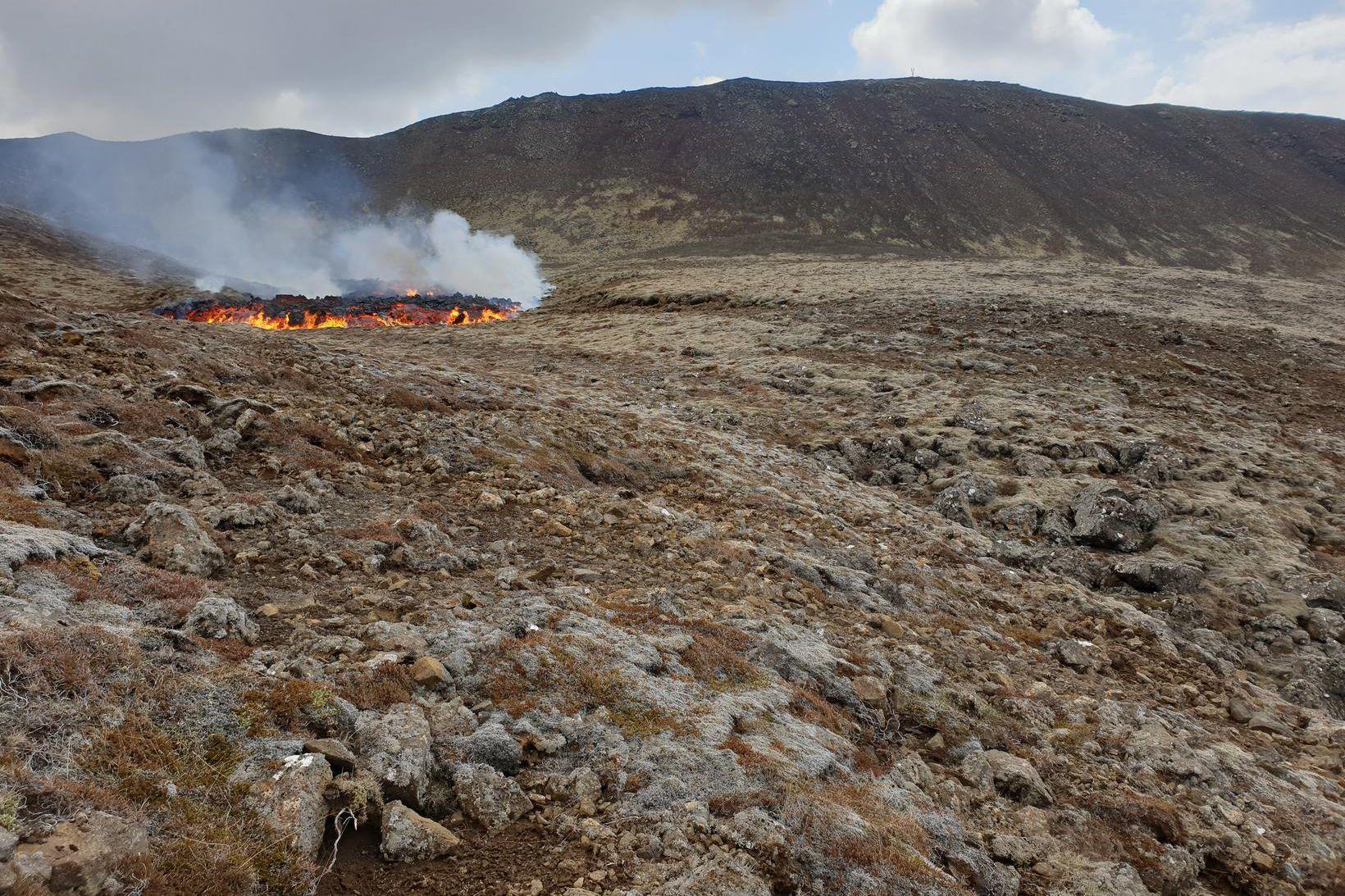Lava Could Fill Nátthagi Valley in Three Months
Assuming the Fagradalsfjall eruption, Southwest Iceland, continues, the lava that now flows in Nátthagi valley could take three months to fill the valley, Magnús Tumi Guðmundsson, geophysicist at the University of Iceland, tells mbl.is .
Protective walls raised to slow down the lava flow did not prevent the lava from reaching Nátthagi valley, from where it could eventually threaten both a fiber optic cable for the Reykjanes peninsula and Suðurstrandarvegur – the road along the south coast of the peninsula.
“According to our first assessment, based on the size of Nátthagi and the slope of the lava elsewhere, it will take about three months [for the valley to fill up],” Magnús Tumi explains.
He is asked how long it might take the lava to flow out of the valley. “If it behaves the way it has been behaving, it will take a while,” he responds. We’ve been mapping the lava once a week, and it appears to behave in a similar way as it does in Meradalir valleys. It’s not moving a long distance. It thickens by about a meter a day and requires a certain slope to move on. The more extensive it gets, the more viscous, and then you can expect it to thicken more slowly, or by half a meter a day.”
“This [development] is not continuous,” he adds. “There are periods where it accumulates, and then there are periods where it stays still, because the lava flows elsewhere. The greater the flow under the surface and as the slope in Nátthagi decreases, conditions can be created for the lava to find a way out of the valley. You might say that this landscape works like a cooling system for the lava. It flows down slopes and its temperature decreases the more it spreads. This, in turn, makes the lava more viscous and likelier to accumulate.”
Magnús Tumi states that first responders have some time to determine the next step to make, and he notes that a new protective wall south of Nátthagi valley could buy them some time. “If [the wall] is ten meter high and the lava thickens by half a meter a day, that means 20 days [before the lava would flow over a potential protective wall],” he explains.




/frimg/1/57/87/1578747.jpg)
/frimg/1/57/94/1579405.jpg)



